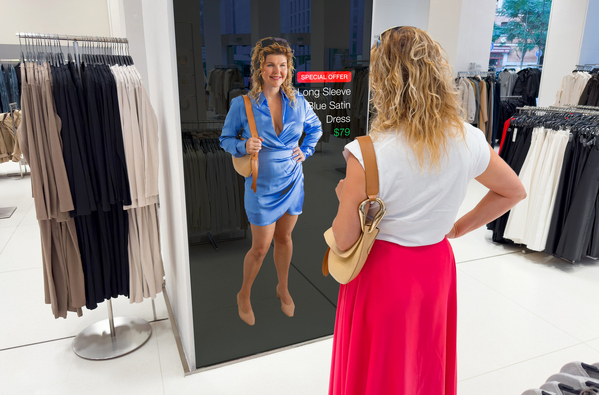Buy online and pick up in-store (BOPS) – advantages and challenges

Online shopping has traditionally been seen by brick-and-mortar retailers as just a separate way to sell the products they have in their store. But it can also help them enrich customer value propositions and improve operational efficiency. How?
Retailers offering customers the option to buy online and pick up in-store (BOPS), or click-and-collect, are becoming widespread, as it provides real-time information about inventory availability and reduces the hassle of shopping. In this model – also known as kerbside pickup, or ROPIS (reserve online, pick up in-store) – a retailer operates both online and offline channels, allowing the consumers to choose the channel most convenient to them.
A recent UPS study found that 45 per cent of people who used an in-store pickup option ended up making a new purchase when picking up the original one. Cross-selling typically contributes significantly to store sales: it is estimated that, on average, a customer who enters a store intending to purchase $100 worth of goods leaves with $120 to $125 worth of goods. Therefore it should be no surprise that more and more merchants are beginning to offer BOPS functionality on their websites.
Given that shoppers are increasingly embracing this new fulfilment option, many retailers see BOPS as a way to expand their customer base. With BOPS, customers get instant gratification, don’t pay for shipping or delivery, and enjoy hassle-free shopping.
How does BOPS work?
First, customers buy online through the retailer’s website or mobile app. While buying online, they choose to pick up in-store and complete their purchase. The customer chooses the time and place for pickup of the items in their cart during the checkout process. The customer is then informed of the location and time of the products’ availability for pick up in real-time by local inventory updates. Additionally, retailers will notify customers via email or text when their order is prepared for pickup.
Advantages of BOPS
There are several ways in which both retailers and customers can benefit from this arrangement:
- Customers can shop from the comfort of their homes and then pick up their orders at the store or a pickup location
- It enables retailers to combine online and offline shopping experiences and optimise the omnichannel retail experience
- Customers may browse additional merchandise when they come into your store to pick up their order
- The BOPS shopping experience allows customers to choose how to fulfil their orders
- When shoppers pick up orders from the store, the retailers save on last-mile shipping costs
- Merging online and in-store inventory tracking gives retailers more access and control over a larger inventory assortment
- It gives better insights into what products are available in real-time
Challenges
BOPS is a fantastic omnichannel retail strategy that can boost sales and make customers happier. But there are still difficulties.
One of the key challenges is choosing the right set of products for BOPS. Most retailers agree that BOPS should not be a blanket functionality blindly applied to all products across all categories. One of the reasons for being selective is to focus on those products that would drive more customers into the stores. On the websites of major retailers, customers can find that some products are not eligible for BOPS. These items are sold in stores, but shoppers must check their local stores for availability if they do not wish to wait for online delivery.
Secondly, as many customers suddenly take advantage of the BOPS model, orders might pile up. If numerous customers pick up at the same time, retailers might run out of room. And if the inventory between the online store and brick-and-mortar shop isn’t synced properly, using the BOPS model could turn into a nightmare.
Thirdly, the advent of BOPS blurs the distinction between the store and online operations. Although BOPS orders originate online, they are fulfiled using inventory in retail stores. Consequently, a successful BOPS implementation requires good coordination between the online and offline channels. Very few retailers have completely dismantled their online and offline channel silos, maintaining a single accounting ledger with an associated organisational structure for all sales regardless of channel.
On balance, the advantages seem to outweigh the difficulties that retailers offering this shipping option must navigate. Moreover, BOPS can address the main headache of reverse logistics – organising the collection of return items. Customers are also happier to get faulty or unwanted products back to physical stores, which can function both as pick-up and drop-off points.
Some retailers may feel that setting up and managing BOPS is a burden for them both financially and logistically. But the unified inventory and omichannel order fulfilment systems that they are putting in place now will almost certainly pay off in the future.
Most Viewed
Winston House, 3rd Floor, Units 306-309, 2-4 Dollis Park, London, N3 1HF
23-29 Hendon Lane, London, N3 1RT
020 8349 4363
© 2025, Lyonsdown Limited. Business Reporter® is a registered trademark of Lyonsdown Ltd. VAT registration number: 830519543






